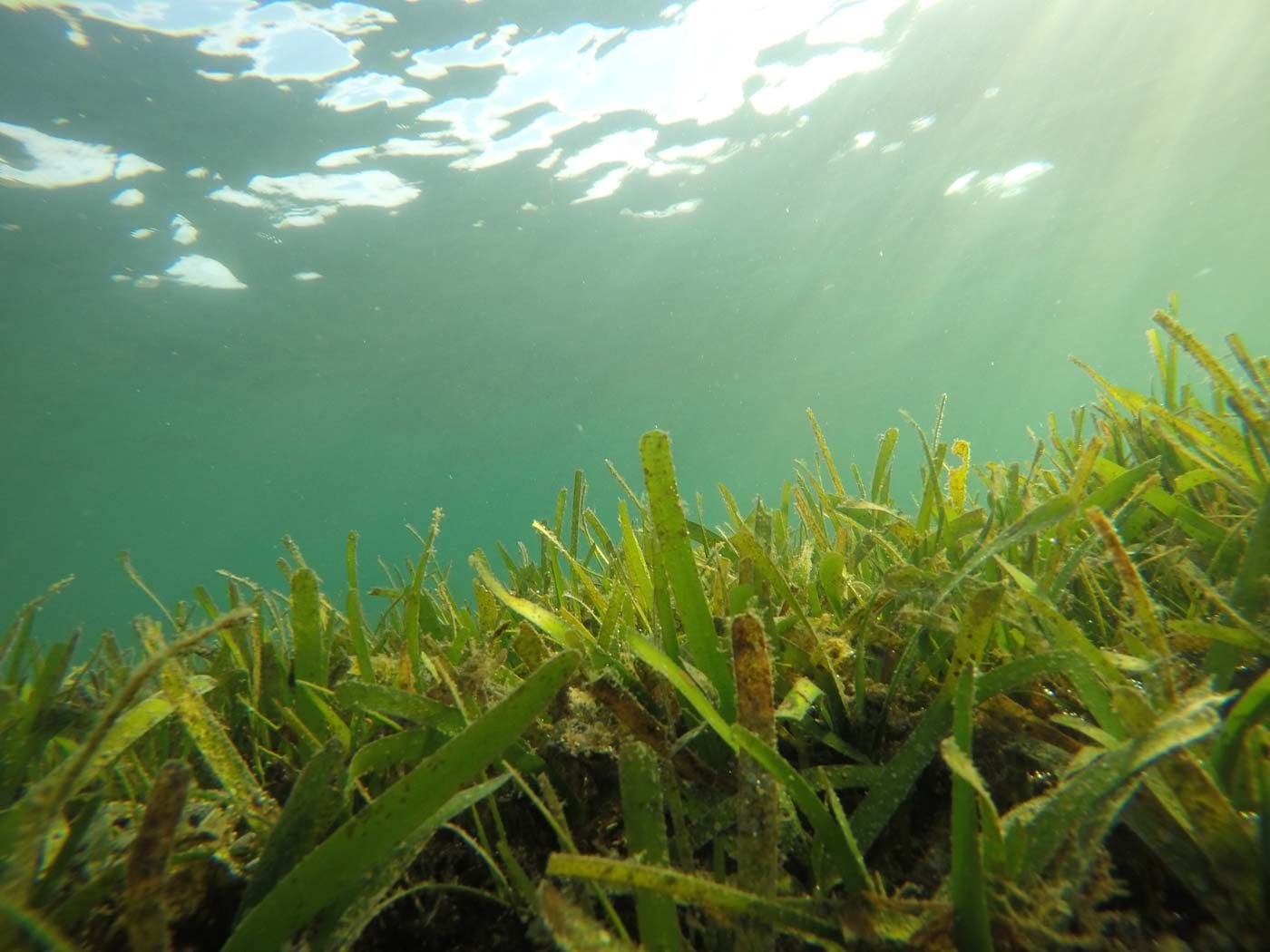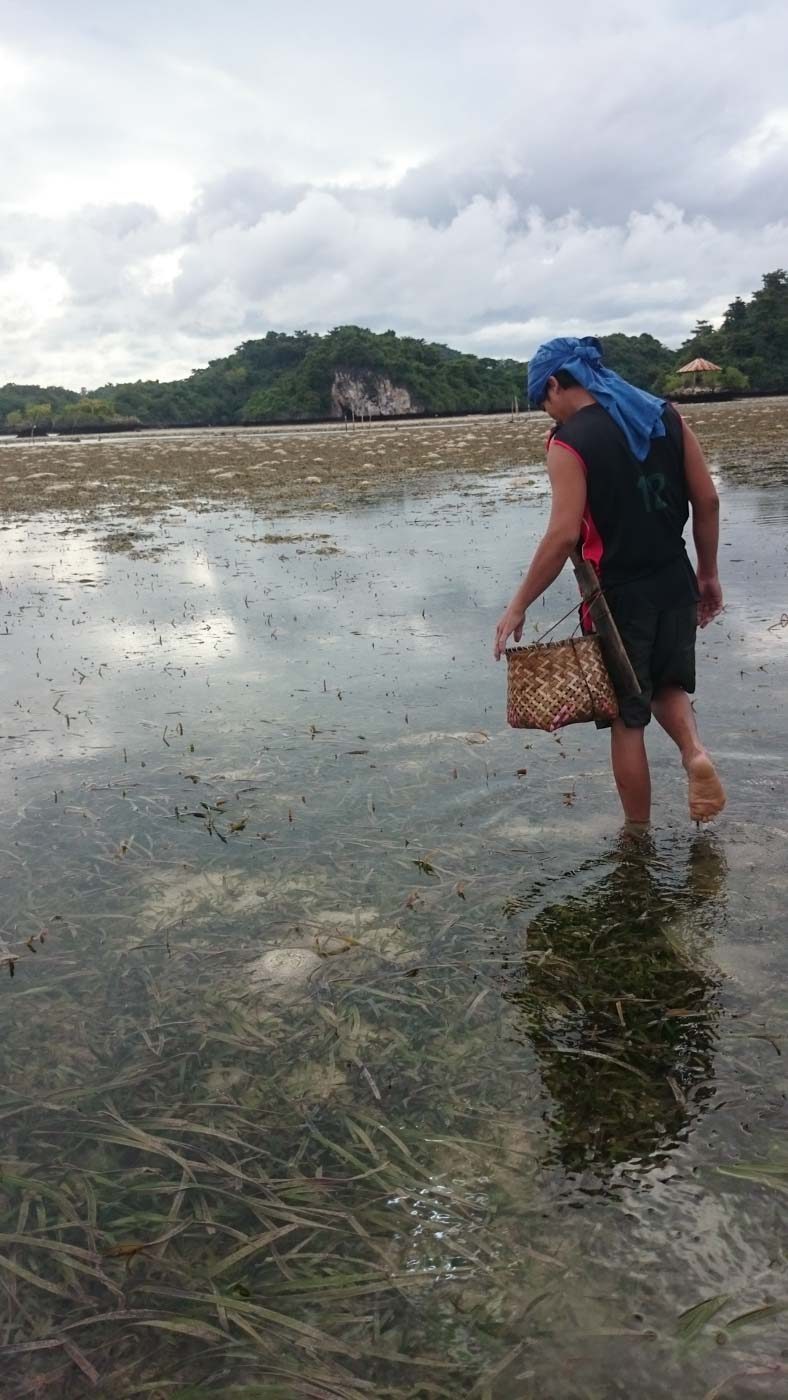SUMMARY
This is AI generated summarization, which may have errors. For context, always refer to the full article.

MANILA, Philippines – Did you know that marine conservation efforts in the Philippines are mainly focused on coral reef habitats?
Such myopic view of conservation led to the neglect of other equally important marine habitats such as seagrass beds, said Richard Unsworth, program leader of the Seagrass Project-Philippines.
“Seagrass beds are the lungs of the sea. They store vast amounts of carbon dioxide in their sediments,” he said.
They are also a nursery ground, a habitat, and a food source for many grazing marine animals. Like mangroves, they protect coastlines against storms and rising tides.
Yet they are one of the overlooked marine ecosystems, now globally threatened due to human impact.
In the Philippines, their importance for coastal communities is being underscored by an ongoing research in Nueva Valencia, Guimaras, conducted by Mary Rose Lopez from the Zoological Society of London (ZSL)-Philippines.
Lopez leads the research for Seagrass Project-Philippines, a component of a bigger research program entitled “Empowering Community Action for Seagrass Conservation in Southeast Asia: Seagrass Meadows Support Food Security.” The research showed that more than 70% of the captured fishes in Nueva Valencia are seagrass-associated.
People from these fishing communities also prefer fishes and other seafoods as their source of protein. Based on household surveys, 8 out of the 10 fishes consumed by households are seagrass-associated, such as rabbitfishes (Siganids), goatfishes (Mullidae), emperor fishes (Lethrinidae), and dulis (Spratelloides sp.). Crustaceans, especially blue swimmer crabs, are also harvested in some barangays.
Overall, 80% of the daily intake of household meals is composed of seagrass-associated fauna.
The same report showed that these habitats urgently need greater protection across the Philippines to prevent their decline. Among the things being done by ZSL-Philippines to preserve these meadows is to lobby for its inclusion in the coverage of Marine Protected Areas (MPAs) to be designated in each coastal communities.
The project is being implemented in 3 sites across Southeast Asia: Indonesia, Cambodia, and Philippines.
Unsworth of Swansea University and Dr Leanne Cullen-Unsworth of Cardiff University are the principal investigators/program leaders for the whole project. Locally, the project is called Seagrass Project-Philippines, implemented in partnership with ZSL-Philippines.
Why Guimaras?
ZSL-Philippines has an existing partnership with the community in Nueva Valencia in Guimaras. They were able to work with a people’s organization in Barangay Dolores to establish a community-based marine protected area and help them win a 25-year stewardship on the mangroves in Basyaw Cove via a Community Based Forest Management Agreement.

Guimaras, a place highly dependent on marine and coastal resources, is the perfect site to investigate and demonstrate how much seagrasses contribute to fisheries in coastal communities.
Lopez described most of the seagrass meadows in Nueva Valencia, Guimaras, as highly diverse and dense, although there are some areas exposed to human activities such as illegal fishing, fishpond operation, and seaweed farming.
In terms of fish diversity, she noted the distinct difference in abundance and diversity between MPAs and open-access (fishing grounds) areas.
“Jack Gourlay, a Master Research student from Swansea University, found that the trophic level of fishes is low especially in open-access areas,” she said.
According to Lopez, the absence of high trophic level fishes in an area could be an indication of overexploitation.
She explained that “fishing usually targets the large fish species (usually carnivorous) in the higher trophic level. Once the larger species decline, due to that selective fishing practice, fishers shift their fishing to species in the lower trophic level.”
“It is also sad to note that some seagrass beds are being utilized as mangrove planting sites. This is an example of wrong mangrove planting practice, where the wrong species and/or location is used by the community for mangrove planting,” she added.
Focus on management issue
According to Lopez, the receptiveness of the local government toward projects on marine conservation helps.
“Their assistance made logistical preparations and communication with the barangays easier,” she said.
She added that Barangay Fisheries and Aquatic Resources Management Councils and members of the fishers’ association are especially helpful in informing locals about their activities and in encouraging them to take part.
“Their inputs have helped us a lot in verifying our findings,” she added.
Below are some of the recommendations they have identified after conducting surveys and meetings with stakeholders:
- Prohibit planting mangroves on seagrass beds
- Include seagrasses in their proposed MPA or fish sanctuary
- Deputize old fishers to serve as fish wardens to increase efficiency in monitoring against illegal fishing activities
- Regulate the size of filter nets used, because the current mesh size catches a significant portion of juvenile fishes
A previous research on the willingness of off-site households to pay for seagrass conservation is worth noting, as it gives insights on applicable local policies and programs to conserve seagrass.
The study “confirmed that off-site residents (in this case, from Guimbal, Iloilo) placed positive economic valuation for seagrass conservation in a distant site (Nueva Valencia), as evidenced by their willingness to pay. Women and years of education positively influenced willingness, the data shows.”
This focus on management issue is one of the advancements in local seagrass research, according to Miguel Fortes in his review published in the Philippine Journal of Science.
Raising awareness and beyond
Efforts are also being made to help people understand that the implementation of these conservation and preservation measures are not just meant to protect the environment but also to care for their general welfare as well.
One of ZSL-Philippines main activities is called You and Me Under the Sea, a storytelling event with interactive games created to raise awareness among kids about the importance of coastal ecosystems (corals, mangroves, and seagrasses), and the impact of their actions on marine environment.
ZSL-Philippines also actively takes part in a new international research project, the Indo-Pacific Seagrass Network, to better understand seagrass meadows and intertidal invertebrate collection (referred to as gleaning).
It is a research collaboration between local and international researchers in the Indo-Pacific for sustaining food security in coastal communities.
“Through this, better proposals for conservation can be made,” Unsworth said. – Rappler.com
To help map and identify seagrass meadows around the Philippines, download the Seagrass Spotter app or follow the social media pages of the Philippine Seagrass Initiative.
ZSL-Philippines also conducts training on science-based mangrove rehabilitation and conservation.
Here’s a link to a manual on science-based mangrove rehabilitation in the Philippines developed by the ZSLMarine Philippine Team.
Add a comment
How does this make you feel?
There are no comments yet. Add your comment to start the conversation.